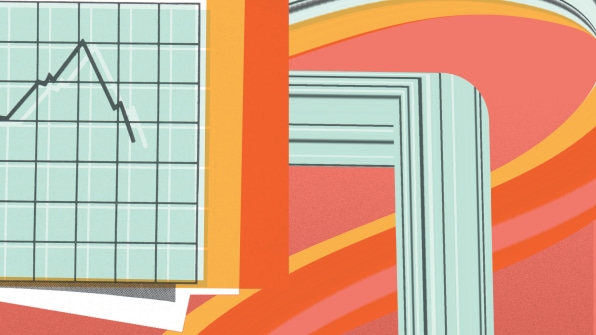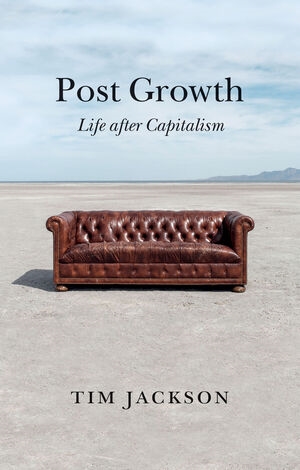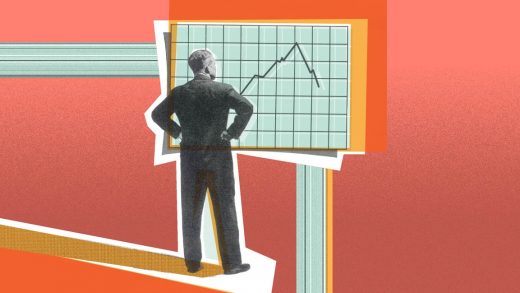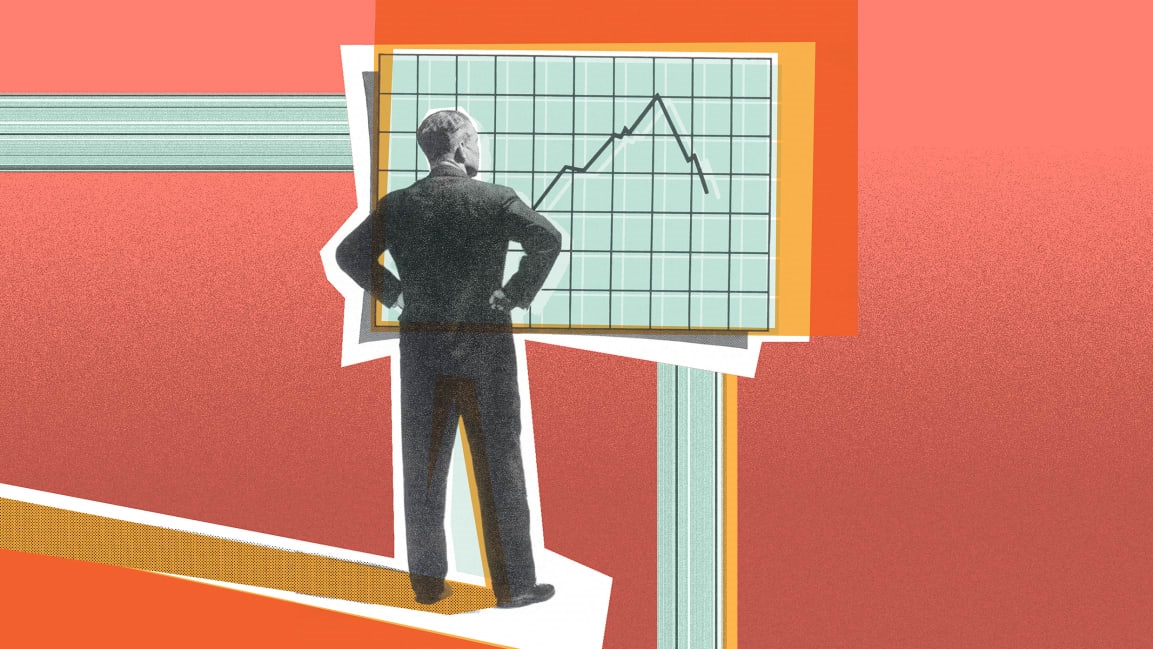The twisted psychology of capitalism—and why it won’t hold sway forever
By tim jackson
If you listen to economists talk about the world right now, you’d be forgiven for feeling a little confused. The pandemic precipitated the worst recession since the stock market crash of 1929. Now, we’re told, the U.S. and China could be heading for the fastest recovery on record. But it’s set to be uneven—a “tale of two recoveries,” according to the World Bank. The best of times for the rich. The worst of times for the poor. Same as it ever was.
What does this all mean as we emerge from lockdown and look toward the even bigger challenges that lie ahead—climate change, the devastating loss of nature, and the social inequality that still haunts society?
The pursuit of GDP growth has been the holy grail of capitalism since the Second World War. But its relevance to the quality of our lives has always been a little sketchy. Shortly before the U.K. took its fateful Brexit vote in 2016, a government adviser came to a town meeting to persuade people to vote “remain” because of the impact leaving the European Union could have on the country’s GDP. “That’s your bloody GDP!” shouted a woman in the audience. “It’s not ours!”
For the last half century, our obsession with growth has never consistently benefited everyone. Quite often, it was the rich who benefited most. And as the economy grew and grew, the impact on the planet has been nothing short of devastating. It’s tempting to wonder, as the recovery takes shape, whether this time we might aim for something better. But to get there, we may first have to learn some harsh lessons from history.
The manufacture of desire
The crash of 1929, which precipitated the Great Depression, has been called with some accuracy a “crisis of overproduction.” Technological innovation had generated massive increases in productivity. Our ability to produce had outstripped our desire for the product. Supply was plentiful but demand was insufficient. Prices fell, confidence plummeted, investment slowed, unemployment soared, and it took a decade and a half (and the military expenditure of WWII) to get the global economy back on track.
We might at that point have reflected more deeply on what it is that humans really need and how best to deliver it. We might have looked more critically at our obsession with productivity, for the sake of productivity. But instead, capitalism responded to that crisis by stimulating desire. Never again should we suffer from insufficient demand. Along came a whole new industry designed to manufacture not products but desire. To stimulate the demand that capitalism needed to maintain the engine of growth.
To further this cause, the “Madmen” of the postwar years drew on a vision of humanity that cast us all as restless, insatiable consumers. Their latter-day mimics pursue our every move with algorithm-driven marketing, promising unrivaled happiness—so long as we continue to shop. Was it our imagination? Or did lockdown bring a step-change in our online exposure to instant gratification? We know it isn’t real. But the lure is irresistible. Like kids in the candy shop, we are continually persuaded to spend money we don’t have on things we don’t need—to create impressions that won’t last on people we don’t love. In the meantime, the poor still suffer. And the planet reels from our indulgences.
The promise of heaven
There’s a paradox here familiar to us all. “Post-purchase dissonance” is an expression that psychologists use to describe the disappointment we sometimes feel upon realizing that our latest purchase doesn’t fulfill its promise. At first sight, it’s just a curious anomaly. On deeper reflection, it turns out to be the structural basis for the success of consumerism. Postwar capitalism trades not on happiness but on unhappiness. The engine of consumer society is discontent.
This is more than just a rhetorical claim. Let’s take consumerism’s more ostentatious charms: the glitter and bling, the endless parade of new and exciting products that keeps us shopping. Novelty lies at the beating heart of capitalism. Innovation is vital to enterprise. Austrian economist Joseph Schumpeter called it creative destruction: the continual throwing over of the old in favor of the new; the relentless search of the entrepreneur for new markets and new products to fill them with. These are the rewards that innovation can bring.

But for this to work, novelty must occupy a pivotal place in the human heart. The marketers have to persuade us just how much we love new stuff. Admittedly, they’re pushing on an open door. There is, of course, a genuine desire for novelty in the human psyche. Conspicuous consumption signifies status and power. But novelty also signals hope. It holds out the promise of a brighter and shinier world for us and for our children. Consumerism thrives on this promise. The job of advertisers is to ensure that we never forget it.
Consumerism’s most glittering prize is the promise of immortality itself: an earthly paradise of never wanting, never needing, never lacking for anything imagination can dream of. “The human animal is a beast that dies. And if he’s got money, he buys and buys and buys,” says Big Daddy in Tennessee Williams’s play Cat on a Hot Tin Roof. “And I think the reason he buys everything he can is that in the back of his mind is the crazy hope that one of his purchases will be life everlasting.” Suddenly, we find ourselves in the grip of a powerful social logic. Economic structure on the one hand and human psyche on the other bind us into an “iron cage” of consumerism.
Trading on shame
The first crack in the shiny surface appears with the realization that the system itself is rooted in anxiety. The economist Adam Smith called this the desire to live “a life without shame.” Shame magnifies consumer needs. Advertisers know this only too well. They play on the power of misplaced shame. “What does your car (house, holiday, laptop, toilet roll . . .) say about you?” they ask, in ever more beguiling ways.
In Smith’s day, a relatively modest set of goods could stave off social shame. He talked about the need for a simple linen shirt, “the want of which would be supposed to denote that disgraceful degree of poverty, which, it is presumed, nobody can well fall into without extreme bad conduct.” Nowadays, the must-have basket of necessary goods has expanded massively, as indeed it has to do for the system to continue to work. Fast cars, fast food, fast sex, fast fashion. If we ever stop coveting the fruits of desire, the economy starts to fail. Unemployment rises. Instability beckons.
And this is precisely why anxiety must tip over into outright dissatisfaction if capitalism is to survive. Consumerism must promise paradise. But it must systematically fail to deliver it. It must fail us, not occasionally, as psychologists suggest, but repeatedly. Endlessly invoking desire. Relentlessly delivering disillusion. The success of consumer society lies not in meeting our needs but in its spectacular ability to continually disappoint us.
Recovery for realists
This might seem at first like a dark and hopeless conclusion. I don’t believe it is. It’s an essential recognition that consumerism is, and always was, a social construct. A necessary element in a story that is no more real than the tooth fairy. A fanciful but unfulfilling dream sold to us by the architects of desire in order to perpetuate the engine of growth. A historical cul-de-sac that has led us perilously close to disaster. But those lessons may still save us.

“History, despite its wrenching pain, cannot be unlived,” wrote Maya Angelou. “But if faced with courage, need not be lived again.” As we stumble warily out of lockdown, searching for recovery and struggling to make sense of the economists’ confusing prognostications, we would do well to heed the lessons learned, not just through this pandemic, but from previous crises and from earlier recoveries.
Hitching our wagons once again to the myth of eternal growth is a surefire recipe for disaster. Consumerism degrades the environment. It divides us from each other. Ultimately, it undermines the happiness it promises to deliver. But to recognize this failing is to loosen the chains that bind us to a dysfunctional prison of our own making. From here we can begin to understand both why consumerism must eventually fall, and how to replace it.
Excerpted and adapted from Post Growth: Life After Capitalism (Polity Books, 2021), by Tim Jackson.
(63)



